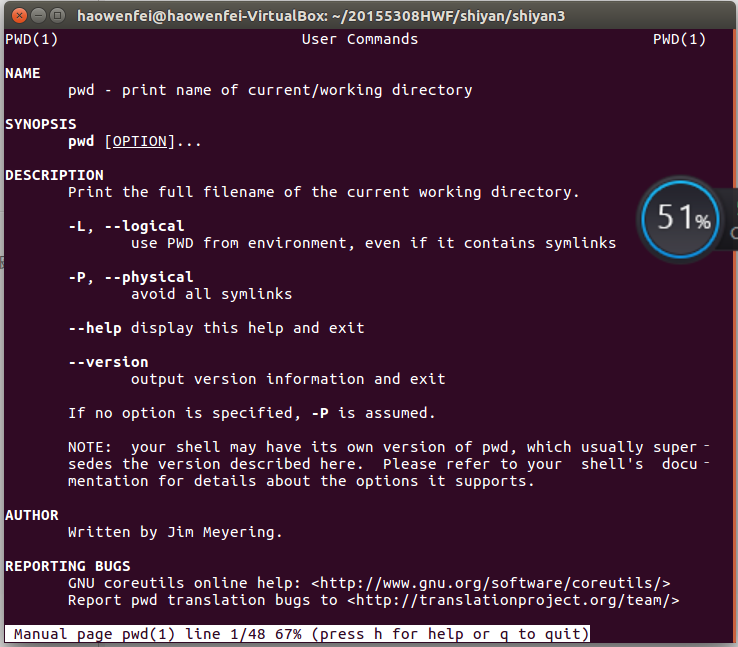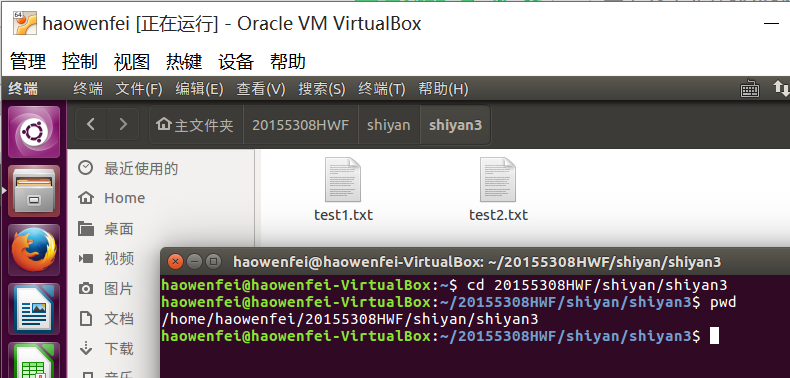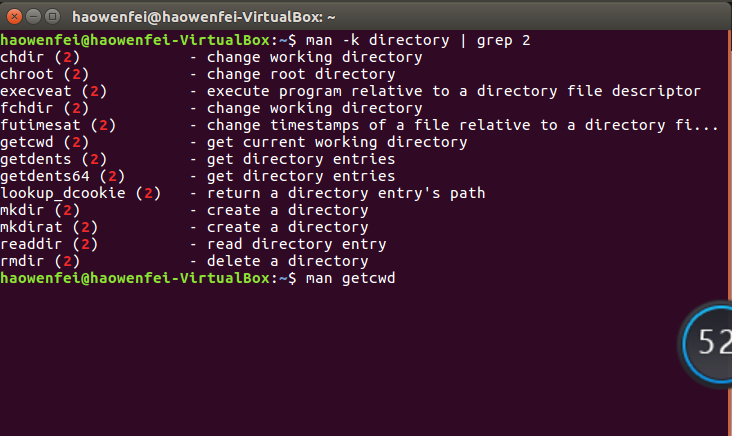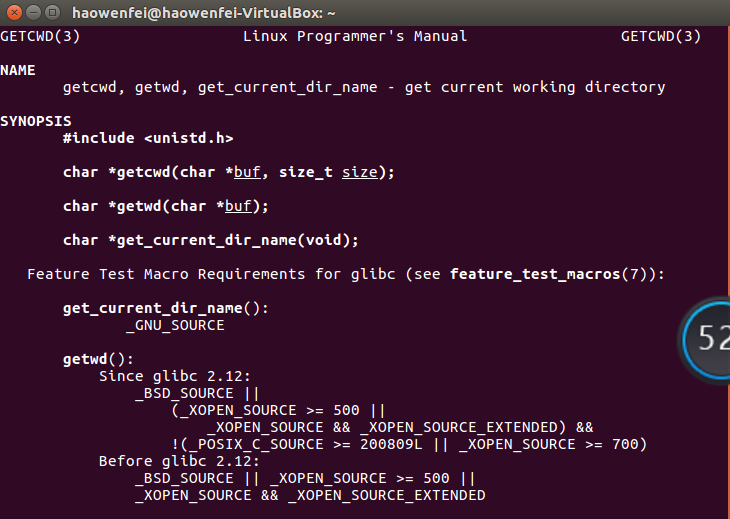20155308 加分项——C语言实现Linux的pwd命令
20155308 加分项——C语言实现Linux的pwd命令
实现要求
学习pwd命令
什么是pwd
- pwd‘ 代表的是‘Print Working Directory’(打印当前目录)。如它的名字那样,‘pwd’会打印出当前工作目录,或简单的来说就是当前用户所位于的目录。它会打印出以根目录 (/)为起点的完整目录名(绝对目录)。
基本语法
pwd [OPTION]
详细用法
- 利用
man pwd查看pwd的用法

常用实例
参考
http://www.cnblogs.com/peida/archive/2012/10/24/2737730.html
学习了pwd命令
- 实例1:用pwd命令查看默认工作目录的完整路径

- 实例2:使用 pwd 命令查看指定文件夹

- 实例3:/bin/pwd
命令:/bin/pwd [选项]
选项:
-L 目录连接链接时,输出连接路径
-P 输出物理路径
输出:
[root@localhost init.d]# /bin/pwd
/etc/rc.d/init.d
[root@localhost init.d]# /bin/pwd --help
[root@localhost init.d]# /bin/pwd -P
/etc/rc.d/init.d
[root@localhost init.d]# /bin/pwd -L
/etc/init.d
研究pwd实现需要的系统调用(man -k; grep),写出伪代码
首先输入命令
man -k directory | grep 2
查看

发现getcwd()函数符合条件后,查看其用法

- 伪代码为:
定义一个字符串数组储存绝对路径
调用函数getcwd()
if (返回的指针==NULL)
调用函数出错,发出错误报告
else
打印结果
代码实现
#include<stdio.h>
#include<sys/stat.h>
#include<dirent.h>
#include<stdlib.h>
#include<string.h>
#include<sys/types.h>
void printpath();
char *inode_to_name(int);
int getinode(char *);
int main()
{
printpath();
putchar('\n');
return ;
}
void printpath()
{
int inode,up_inode;
char *str;
inode = getinode(".");
up_inode = getinode("..");
chdir("..");
str = inode_to_name(inode);
if(inode == up_inode) {
// printf("/%s",str);
return;
}
printpath();
printf("/%s",str);
}
int getinode(char *str)
{
struct stat st;
if(stat(str,&st) == -1){
perror(str);
exit(-1);
}
return st.st_ino;
}
char *inode_to_name(int inode)
{
char *str;
DIR *dirp;
struct dirent *dirt;
if((dirp = opendir(".")) == NULL){
perror(".");
exit(-1);
}
while((dirt = readdir(dirp)) != NULL)
{
if(dirt->d_ino == inode){
str = (char *)malloc(strlen(dirt->d_name)*sizeof(char));
strcpy(str,dirt->d_name);
return str;
}
}
perror(".");
exit(-1);
代码测试

实验感想
上课老师讲过了pwd的用法,下课我们用过这个学习,让我更好地明白了pwd的各种功能以及代码实现过程。



